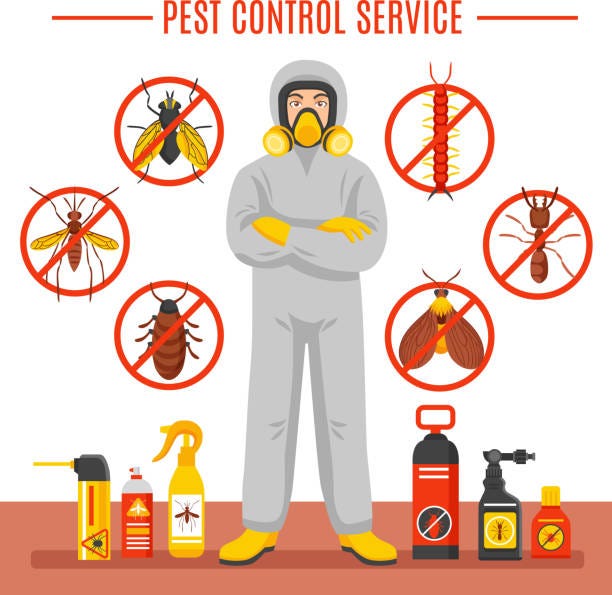Trustworthy A1 Bed Bug Exterminator Charlotte - Remove Bed Bugs Rapid
Wiki Article
Bed Pest Treatment Breakdown: Contrasting Chemical Vs. Non-Chemical Solutions
In the realm of pest control, especially when handling the relentless problem of bed pests, the option in between chemical and non-chemical treatment solutions can be an essential one. Both strategies offer distinctive benefits and downsides, affecting elements such as performance, safety considerations, and overall cost. By checking out the nuanced details of each technique, a more clear understanding of which path to pursue in resolving a bed insect problem can be achieved.Performance of Chemical Treatments
Chemical therapies for bed insect infestations have been commonly recognized for their potent and fast efficiency in removing these pests. When thinking about the performance of chemical therapies, it is important to understand that they can offer a complete and quick option to a bed pest problem. Professional pest control men often depend on insecticides to target bed bugs at various stages of their life process, consisting of fairies, adults, and eggs. These chemicals generally function by interfering with the bed bugs' nervous system, causing paralysis and ultimate fatality.In addition, chemical therapies have the benefit of using residual impacts, implying that they can continue to remove bed insects even after the first application. This residual action is specifically advantageous in combating any potential re-infestations. In addition, the quick action of chemical therapies can bring relief to people dealing with severe bed pest infestations, permitting them to reclaim control of their living rooms rapidly.
Safety And Security Worry About Chemical Solutions
When making use of chemical services for bed pest treatment is making sure the safety of passengers and the environment,One vital aspect that requires careful consideration. While chemical therapies can be efficient in eliminating bed pests, they may present risks otherwise managed properly. One of the primary security interest in chemical options is the possible harm they can trigger to human wellness. Exposure to specific chemicals used in bed insect treatments can lead to respiratory system issues, skin irritation, or other negative reactions, specifically in individuals with pre-existing conditions or sensitivities. Furthermore, inappropriate application or dosage of chemical pesticides can result in hazardous residues lingering in the cured location, positioning long-lasting health risks to passengers.In addition, the environmental impact of chemical remedies is one more substantial consideration. Some pesticides utilized in bed insect treatments may be hazardous to useful insects, wildlife, and communities if they leach right into the dirt or water systems. It is essential to make use of chemical therapies carefully, complying with safety guidelines, and considering much less hazardous options to alleviate these threats and look here guarantee the efficient and safe administration of bed pest infestations.
Advantages of Non-Chemical Techniques
Thinking about the possible safety concerns and environmental effect Web Site linked with chemical remedies for bed insect treatment, exploring non-chemical techniques offers a promising alternative with a number of distinct benefits. Non-chemical treatments are environmentally friendly, as they do not add to air or water air pollution, making them a sustainable choice for pest control.Additionally, non-chemical services can be effective in targeting bed bugs, consisting of hard-to-reach locations where chemical treatments may not penetrate - A1 exterminators charlotte nc. Approaches such as heat therapy, vacuuming, vapor cleansing, and bed mattress encasements provide detailed obliteration without the use of hazardous chemicals.
Limitations of Non-Chemical Treatments

Additionally, non-chemical treatments usually need numerous applications to accomplish effective removal. This can be time-consuming and might not constantly assure full removal of all bed pests and their eggs, especially in hard-to-reach or concealed locations.
Furthermore, the success of non-chemical treatments greatly counts on appropriate application and thoroughness, which can be testing for people without expert competence. Inadequate application of non-chemical techniques may result in insufficient elimination, leading to persistent infestations and the demand for extra therapies.
Consequently, while non-chemical therapies have their advantages, it is vital to recognize these limitations and consider them when determining one of the most efficient method for managing bed bug infestations.
Price Contrast: Chemical Vs. Non-Chemical Options
Provided the constraints linked with non-chemical treatments, a vital facet to assess in the context of bed bug monitoring is the expense comparison between chemical and non-chemical alternatives. In contrast, non-chemical treatments like warm therapy or heavy steam can be more expensive, with prices varying from $1,000 to $6,000 for a whole home. While the first price of chemical therapies might appear reduced, multiple treatments might be called for to fully eliminate the invasion, potentially enhancing the total cost.Conclusion

Thinking about the possible safety issues and ecological impact linked with chemical services for bed bug therapy, discovering non-chemical approaches provides an appealing choice with several distinct benefits.Provided the restrictions connected with non-chemical treatments, a crucial aspect to evaluate in the context of bed insect management is the price comparison between chemical and non-chemical choices. In contrast, non-chemical treatments like warm therapy or vapor can be much more pricey, with costs ranging from $1,000 to $6,000 for a whole home. While the preliminary expense of chemical treatments may appear reduced, numerous therapies might be needed to completely remove the invasion, potentially enhancing the overall expense.In final thought, when contrasting chemical and non-chemical bed bug treatment alternatives, it is important to consider efficiency, security, benefits, limitations, and price.
Report this wiki page